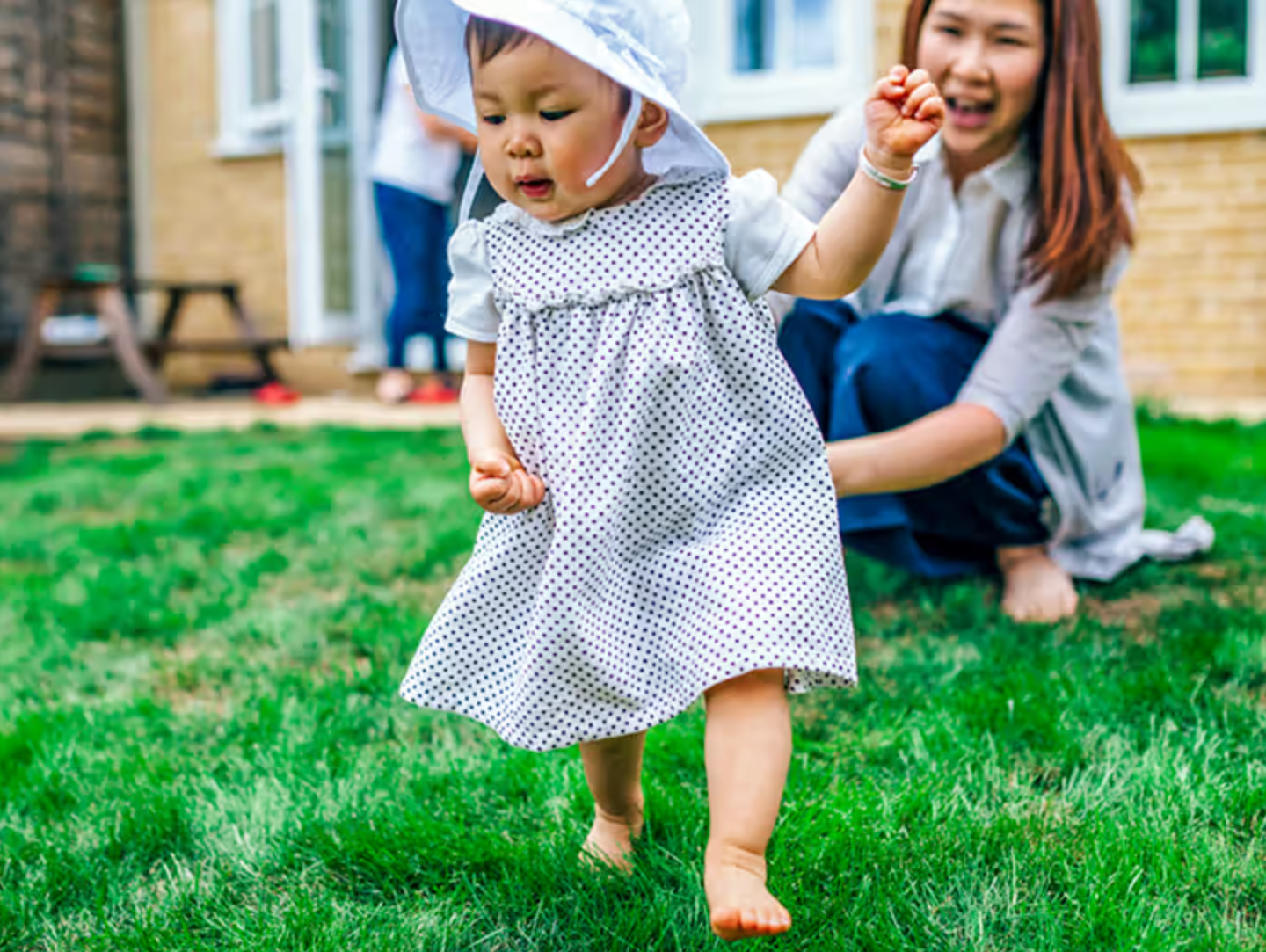Why some babies walk early and others late: It’s in their genes
Large study links walking age in babies to specific genes, offering insight into early brain development and childhood disorders.

A baby’s first step isn’t just a cute moment—it’s linked to thousands of genes shaping brain growth. (CREDIT: CC BY-SA 4.0)
At first glance, when a baby takes their first step, it seems like a simple event. But behind that wobbly moment lies a complex mix of biology, development, and even genetics. Scientists now know more about why some children walk earlier than others, thanks to a large international study that looked at the genes of more than 70,000 infants.
This research, the first of its kind, revealed 11 regions in the human genome that are tied to the age at which a baby starts walking. Published in Nature Human Behaviour, the study found that about 24% of the differences in walking age come from genetic variations—roughly the same contribution that genetics has on traits like intelligence or height.
Walking as a Window into Brain Development
The age at onset of walking (AOW) is often used by doctors and public health experts to check for developmental delays. In many countries, if a child isn’t walking independently by 18 months, it’s considered a sign to investigate further. This delay might point to problems such as muscle disorders, neurological conditions, or overall developmental delays. However, only about a third of late walkers end up having any developmental disorder, according to past data.
Most babies begin walking between 8 and 18 months. But within that range, there's still a lot of variation. Some babies may shuffle on their bottoms instead of crawling, while others skip crawling altogether. Walking, however, is nearly universal and marks a clear turning point in both physical and cognitive development.
The research shows that AOW isn't just a matter of muscle strength or chance. Instead, it reflects broader patterns in brain development. Professor Angelica Ronald from the University of Surrey, one of the study’s senior researchers, explains, “Most babies take their first step sometime between ages 8 months and 24 months. It is a big moment for both parents and baby; it symbolises a new phase in a child’s life.”
How Genes Shape First Steps
The team’s genome-wide association study (GWAS) included infants of European ancestry from four major cohorts. They identified over 11,900 genetic variants that together explain about 90% of the genetic influence on walking age. This suggests the trait is highly polygenic—affected by many small genetic contributions rather than just a few large ones.
Related Stories
- How does the brain make memories?
- Can ultrasound help treat Alzheimer’s, Dementia and the brain?
- Can ultrasound help treat Alzheimer’s, Dementia and the brain?
Among the newly discovered genes was one in a region called RBL2, which is active in the brain. Researchers found that these genetic factors also overlap with other important traits. For example, children who walk later (within the typical range) tend to have a lower genetic risk for attention-deficit/hyperactivity disorder (ADHD) and are genetically linked to increased brain surface folding, a marker of complex brain development.
Dr. Anna Gui, who works at both the University of Rome Tor Vergata and Birkbeck, University of London, noted, “Until now, we didn’t understand what causes the wide differences between children in when they take their first step.
Parents might often worry that walking early or late is a bad sign or that they have done something wrong. We see that genetics play a considerable role in influencing the timing of this milestone.”
The research team used polygenic scores—numbers that reflect a person’s inherited likelihood of having a certain trait—to predict walking age. These scores explained between 3% and 5.6% of the variation in walking age in samples outside the original study, and results held up even when comparing siblings. This suggests the genetic signals aren't just due to shared environments but stem from direct genetic effects.
Ties to Broader Health and Learning Patterns
Walking may be one of the earliest signs of how the brain is developing, and its timing appears to ripple across other parts of life. Later walking within the normal range is genetically connected with larger brain folds, higher educational attainment, and a lower risk of ADHD. The findings point to a link between the motor areas of the brain—like the cortex, cerebellum, and basal ganglia—and the control of walking.
“Walking isn’t just a key milestone in the development of a child, but it is connected in terms of genetic influences with many other important aspects of human development,” the authors wrote. Not only does walking mark a step in physical independence, but it also changes how children view and explore the world. The shift from crawling to walking gives infants a whole new visual and interactive experience, which may in turn influence learning and behavior.
That shift is important. When children start walking, their environment changes—they can reach for new objects, follow people from room to room, and explore with more freedom. These new experiences may accelerate development in language, social interaction, and problem-solving.
What This Means for Families and Doctors
The study helps explain why some children may walk sooner than others—and why that’s often no cause for worry. While it’s important to speak with a doctor if a child isn’t walking by 18 months, the research shows that later walking doesn’t always mean there’s a problem.
"While parents should still see their GP if they are concerned, a slightly later start is not always a sign of problems," said Professor Ronald. "There is a lot of variety in when children take their first step on their own."
The findings could also help improve early screening tools. Genetic testing might eventually be used alongside current developmental assessments to identify which children need support. It could also help avoid unnecessary referrals or ease concerns for parents whose children are just on the slower side of normal.
There’s still much to learn, especially about how environmental factors like nutrition, exercise, and cultural norms interact with genetics. Some children may be slower to walk simply because they didn’t have enough space or opportunity to practice. Others may walk later due to being born early or due to differences in body size or shape. But what this study shows clearly is that a child’s DNA plays a big part.
Thanks to international collaborations and funding from groups like the Simons Foundation for Autism Research Initiative, the study brings science one step closer to unlocking how early childhood unfolds—and how genetics help shape a child's journey from crawling to walking and beyond.
Note: The article above provided above by The Brighter Side of News.
Like these kind of feel good stories? Get The Brighter Side of News' newsletter.



